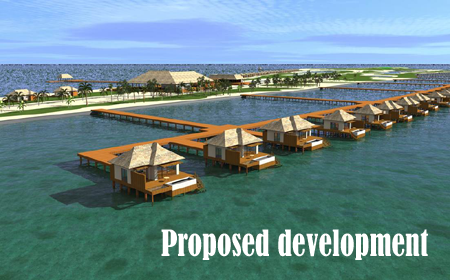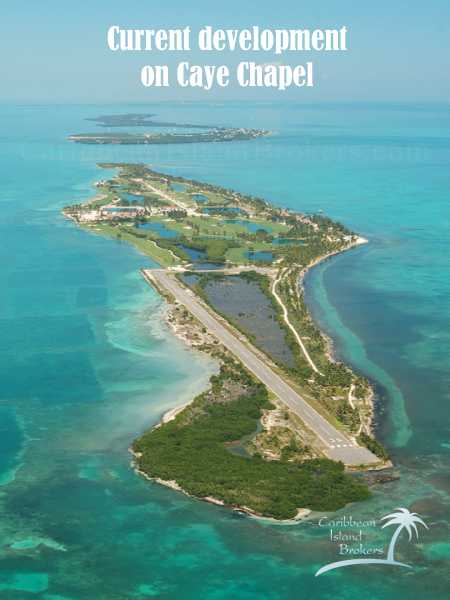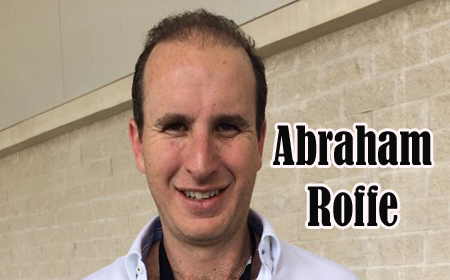BELIZE CITY–Mexican developers, Abraham Roffe and Abraham Saade, the owners of El Secreto, a resort which opened its doors in San Pedro in 2012, are two of the main investors behind a new resort development planned to take place in 2015 on the historic island of Caye Chapel.
This was confirmed today by Mike Singh, chairman of the Belize Trade and Investment Development Services (BELTRAIDE), although Singh said he was not at liberty to disclose the price which the Mexicans paid for Caye Chapel, since it was a private transaction between them and the Belize Bank.
Previous talks with potential buyers, the most recent being Yumi Limited of the British Virgin Islands, who proposed to purchase the island for US$30 million, fell through.
Although the Caye Chapel package appeared to be a hard sell, Singh said that an improvement in Belize’s S&P ratings was encouraging to the investors.

Singh explained that on Monday the Mexicans took possession of the island, formerly owned by Isaiah Morter, British Honduras’ first known black millionaire. There are also other foreign investors in the mix who have not yet been named.
“Caye Chapel has been in receivership for the last 4, 5 years with the Belize Bank,” Singh explained.
He said that the bank took over the property from Larry Addington in exchange for a debt which he owed the bank. The bank then did a swap on its balance sheet to acquire the asset, Singh said.
Singh said that the investors are in talks with representatives of the Four Seasons brand. He said that the developers had said that they would present a plan for the project in 2015 and that the resort would consist of 140 high-end rooms plus residential development.
Singh said that the proposed development in Caye Chapel will bolster our tourism product and create jobs.
“Overall, we think it’s positive,” he commented.
There were concerns over the fact that the government did not initially release the names of the Mexican investors and suggestions that it may appear to be a shady deal. However, Singh dismissed those notions today, saying that all background checks were executed by the Central Bank of Belize. When we asked for the names of the private investors yesterday, Singh had declined to say, adding that it had not yet been disclosed by the investors in their home country. He said that they were waiting for them to make the announcement there, before they could do so in Belize.
“If the company chooses not to do a formal announcement, that is entirely up to them,” said Singh.
He added that, “that’s the normal way of doing business…”

As for fiscal incentives, Singh said that the Mexicans have not asked for any special deals.
Singh said that it goes without saying that the project, like other large scale projects reviewed by the Cabinet Sub-Committee for Investments, headed by Minister Godwin Hulse, will be subject to what he calls “The Hulse 5-way Test.” That test looks at a range of factors, including employment creation, environmental impacts, as well as returns to the Government of Belize.
“We will be doing everything that we do with the largest investments…” he added.
Singh does not anticipate any major challenge from the environmental community. He said that the island was developed some years ago, and he does not think that the development needed for island will lead to that much change to the existing ecosystem.
As our newspaper had previously reported, British Caribbean Bank International Limited, based at Market Square, Belize City, had acquired Caye Chapel in lieu of a US$30 million liability Caribbean Holdings Inc. (CHI) held with the bank. The bank held the island and villas as security or collateral for a US$20 million loan, which was later increased. The bank acquired Caye Chapel in 2011, in settlement of CHI’s indebtedness to the claimant.
However, the Caye Chapel Resort property, located just 12 miles from Belize City, had been listed at a price of up to US$45 million.
Caye Chapel Update by adeleramosbz
As a historical side note, we recall that Caye Chapel, just south of Caye Caulker, at one point was owned by Isaiah Morter. Morter willed his entire estate to Marcus Garvey in the cause of “African redemption.”
While Garvey was in jail in the late 1920s, his organization was taken over by charlatans, who ended up, after lengthy court proceedings which concluded in 1939, both in British Honduras and in England, in control of Isaiah Morter’s exceedingly wealthy estate. This is how Caye Chapel, a part of Isaiah Morter’s estate, ended up in the hands of an American multimillionaire.


